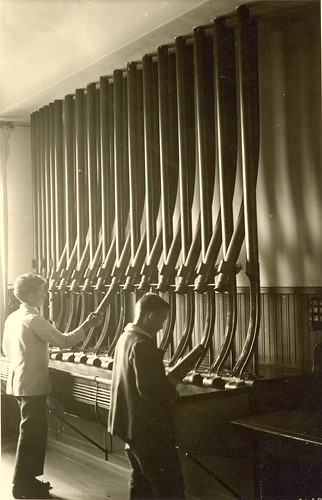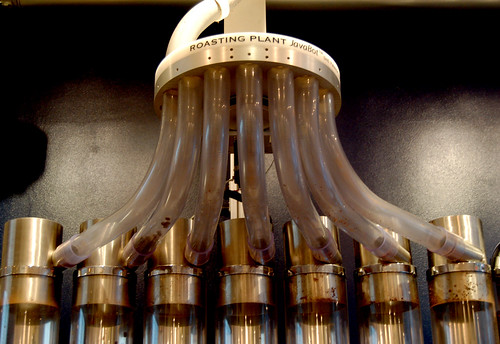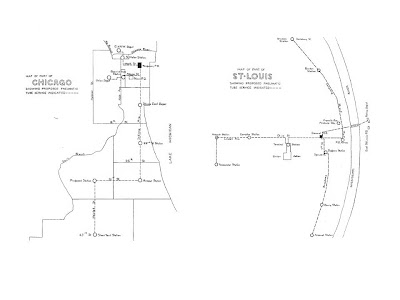Last week I read about smart houses designed in the 1980s. The houses studied by Anne-Jorunn Berg were prototypes designed by international electronic corporations as innovative homes of the future. These houses had motion-activated light control systems, washing machines that signaled on the television screen when the washing was ready to be moved to the dryer and a vacuum cleaner programmed to stop when the doorbell rang.

Berg argues that these houses were designed with no notion of housework in mind, that women’s housework skills were entirely neglected as a design source. However she also points out that technology’s impacts are not entirely determined by designer’s intentions, but is rather open to "interpretive flexibility".
I couldn't help but think when readign of this of the interpretive flexibility taking place in the 'smart house' in Jeffrey Eugenides' novel Middlesex, where the protagonist's brother has a lot of fun with a pneumatic door system.
The family moved into a house designed in 1909 in Middlesex, filled with glass walls and intercoms. The author writes: "Middlesex! Did anybody ever live in a house as strange? As sci-fi? As futuristic and outdated at the same time? A house that was more like communism, better in theory than reality?"
By the time the family moved into the house in the 1960s "you might speak into the kitchen intercom only to have your voice come out in the master bedroom. The speakers distorted our voices, so that we had to listen very closely to understand what was being said, like deciphering a child's first, garbled speech". The architect, Hudson Clark, didn't believe in doors and instead the house was installed with "long, accordian-like barriers, made from sisal, that worked by a pneumatic pump located down in the basement". Pretty soon the brother tapped into the pneumatic system in the basement and spent hours sending a Ping-Pong ball around the house through the network of vacuum cleaner hoses.
I think that there is a lot of interpretive flexibility taking place with pneumatic tube systems wherever they are found. Lunches are sent between hospital departments, secret notes tucked in capsules to plan rendez-vous, and many other interpretations of the technology taking place everyday. A great example of this creativity can also be found in the Heineken commercial ... see this post for video.
Image is from this Heineken commercial. See also this great image of smart doors too in the MOMA collection.
Berg, A-J. (1999). A gendered socio-technical construction: the smart house. In D. MacKenzie and J. Wajcman (eds), the Social Shaping of Technology, pp 301 - 313. Buckingham: Open University Press.
 The New York Humanities and Social Sciences library, and now the New York Science, Industry and Business library have pneumatic systems which allow request slips to be sent deep into the stacks, the books returned on a ferris wheel. In the Law Library in the Library of Congress, there are pneumatic tubes running from the closed stacks to the reading room. Sadly however, some libraries have recently lost their pneumatic systems in the midst of rennovations, such as the St Louis Central Library.
The New York Humanities and Social Sciences library, and now the New York Science, Industry and Business library have pneumatic systems which allow request slips to be sent deep into the stacks, the books returned on a ferris wheel. In the Law Library in the Library of Congress, there are pneumatic tubes running from the closed stacks to the reading room. Sadly however, some libraries have recently lost their pneumatic systems in the midst of rennovations, such as the St Louis Central Library.
















































